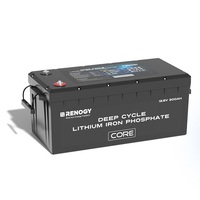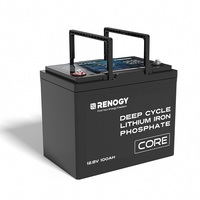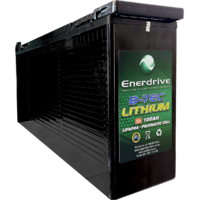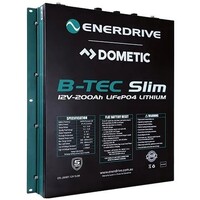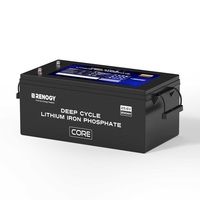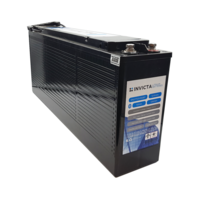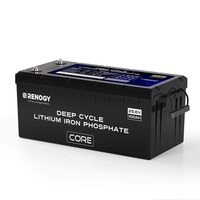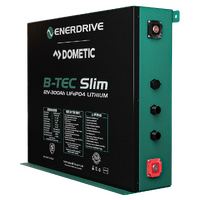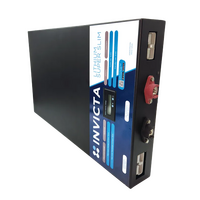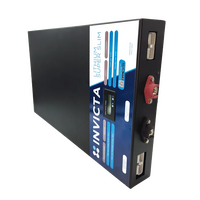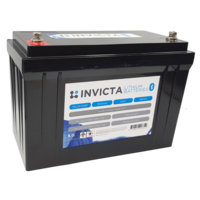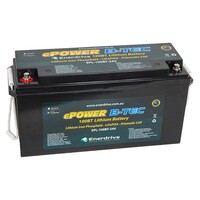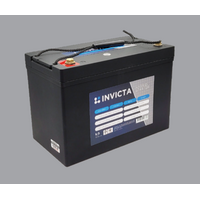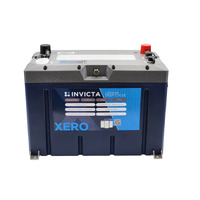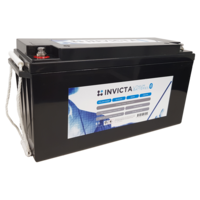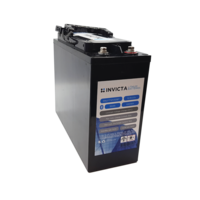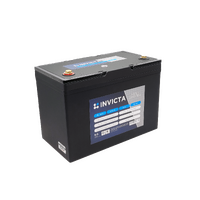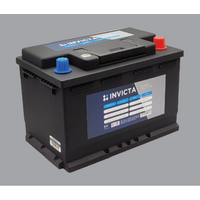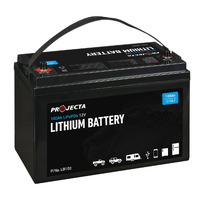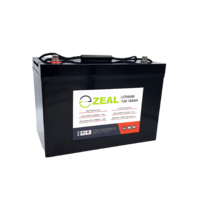Lithium Batteries for Caravans

Lithium Batteries for Caravans

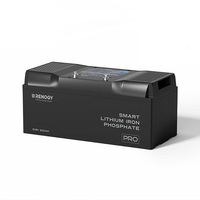
Renogy 12V 200Ah Pro Lithium Battery with Bluetooth & Self-heating Function
$1,079 $1,199

Renogy 12V 300Ah Core Series Lithium Battery with Self Heating
$1,149 $1,415

Enerdrive B-TEC 125Ah Lithium Battery with APP Based Monitoring
$1,658 $2,023
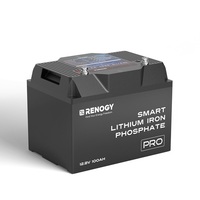
Renogy 12V 100Ah Pro Lithium Battery with Bluetooth & Self-heating Function
$639 $707

Renogy 12V 2 x 100Ah Core Series Deep Cycle Lithium Iron Phosphate Battery, Twin Pack
$949 $1,119
Best Sellers From This Category:
Lithium Batteries For Caravans: Power Up Your RV Adventures
Power up your RV with lithium batteries from Caravan RV Camping. As Australia's leading retailer for caravan and RV supplies, we stock a comprehensive selection of lithium batteries for caravans. These powerful and long-lasting batteries are designed to enhance your off-grid adventures, providing reliable power for all your caravanning needs.
A lithium caravan battery is a popular option for Australian caravan power systems for good reason – they are half the weight and size of an AGM battery. Plus, they promise higher efficiency and better life cycles. A lithium battery has a depth of discharge of almost 80%. This means a 200 Amp Hour lithium caravan battery delivers 160 usable amp hours before you need to recharge it.
Explore Our Extensive Lithium Caravan Battery Range
Discover one of the most extensive ranges of lithium caravan battery models on the market! Featuring almost 40 different Enerdrive lithium batteries for caravans and bundles, plus batteries from Invicta, Victron, Renogy, and more, you will find something for your caravan and budget.
We offer a variety of amp hours to suit the size of your vehicle and your power requirements. Whether you have a small camper trailer with minimal needs or a larger caravan with extensive appliances, we have lithium batteries for caravans that's perfect for you. Our selection starts from as little as 9Ah and goes all the way up to 400Ah, ensuring you have ample power for extended trips.
Lithium Batteries For Caravans With Premium Features
Many of our lithium batteries for caravans come equipped with unique features that enhance their functionality and user experience. For those with limited space, we offer slimline batteries that can fit into tight spaces like 4WD canopies. We also have lithium batteries for caravans that include app-based Bluetooth monitoring, allowing you to conveniently track your battery's health and performance from your smartphone. Additionally, some models feature BMS restart buttons for easy recovery in case of overload or short circuit, and low temperature cut-off functionality protects your battery in harsh conditions. With longer runtimes compared to traditional batteries, lithium batteries for caravans allow you to power your appliances for extended periods, maximising your off-grid adventures. We also have a range of lithium batteries for caravans accessories to enhance the operation of your caravan power system.
Caravan RV Camping: Your One-Stop Shop For Lithium Batteries For Caravans
Caravan RV Camping is your ultimate destination for lithium batteries for caravans. We offer a comprehensive selection of high-quality batteries from trusted brands, ensuring you find the perfect fit for your caravan or RV. Explore our extensive range of lithium batteries for caravans online today.
For expert advice and assistance in choosing the right battery for your caravanning adventures, contact our friendly team on 1800 787 278. We're here to help you power up your next adventure!
Lithium Batteries For Caravans FAQs:
-
1. Why are people converting from AGM to lithium batteries for caravans?
Life Cycle: A lithium battery has almost double the life cycle of an AGM battery.
Cost: Therefore, although AGM batteries are initially cheaper, you will need to fork out additional money much sooner. Lithium batteries also have higher efficiency, performance, longevity, and minimal maintenance – meaning lithium batteries provide more bang for buck!
Depth of Discharge: As a general principle, lithium batteries have a higher depth of discharge (DoD). A lithium battery will provide 80% DoD, while an AGM will only provide 50% DoD. To give you a real world example, a 100Ah lithium battery will give you 80 Usable Amp Hours, while a 100Ah AGM battery will only give you 50 Usable Amp Hours.
Capacity: Due to different depth of discharges, lithium and AGM batteries do not provide the same Amp Hours in the same capacity. Lithium is able to provide more energy in a smaller capacity. For example: 200 Ah of Lithium = 360 Ah
Dimensions and weight: Lithium batteries are up to 70% lighter and smaller than AGM batteries due to AGM batteries containing more lead in their makeup.
-
2. What size battery do I need for my caravan?
To work out exactly what size you require you need to first look at the load you are planning on drawing. The load should be calculated in Amps per hour, or Amp Hours (Ah). So, if you are drawing a 50Ah per day, a 100Ah AGM battery can provide power for about 1 day as you do not want to draw more than 50% from your battery.
The average size for a caravan is 200Ah. If your budget allows you to upgrade to lithium batteries for caravans, you can get a lot more power for the size of the battery. For example, a 200Ah lithium battery can be equivalent to up to 360 Ah of an AGM battery.
-
3. How do I charge my lithium batteries for caravans?
There are three ways to charge your caravan Battery. Either:
- AC to DC - This is using a traditional battery charger that plugs into mains power.
- DC to DC - This is a battery charger connected between the start battery of your tow vehicle and the Caravan Battery. This will charge the battery whilst driving.
- Solar - Solar panels on your roof can be connected to a solar charge controller then to your Caravan Battery.
-
4. What does the integrated BMS do in Invicta batteries?
All Invicta lithium batteries for caravans have an integrated BMS (battery management system) that protects the battery from overcharge/discharge, temperature, and short circuit. The BMS is also tested as part of IEC 62619 certification.
-
5. Can I parallel Enerdrive B-TEC batteries?
The short answer is yes. The long answer is - make sure the Enerdrive B-TEC link cables are of the same size or greater than your load/charging requirements and no more than 4 batteries in parallel.
-
6. Are lithium batteries safe?
Yes, lithium batteries are generally safe when used correctly. However, they can pose risks such as overheating, fire, or explosion if damaged, overcharged, or exposed to extreme temperatures. Lithium iron phosphate (LiFePO₄) batteries are considered the safest lithium type and are commonly used in applications like caravans, solar setups, and home energy systems.
-
7. What’s the difference between lithium-ion and lithium iron phosphate (LiFePO₄) batteries?
Lithium-ion (Li-ion) batteries are common in devices like phones and laptops and offer high energy density. Lithium iron phosphate (LiFePO₄) batteries have lower energy density but offer greater thermal stability, safety, and longer lifespan. That’s why LiFePO₄ is preferred for solar power systems, RVs, and off-grid applications.

